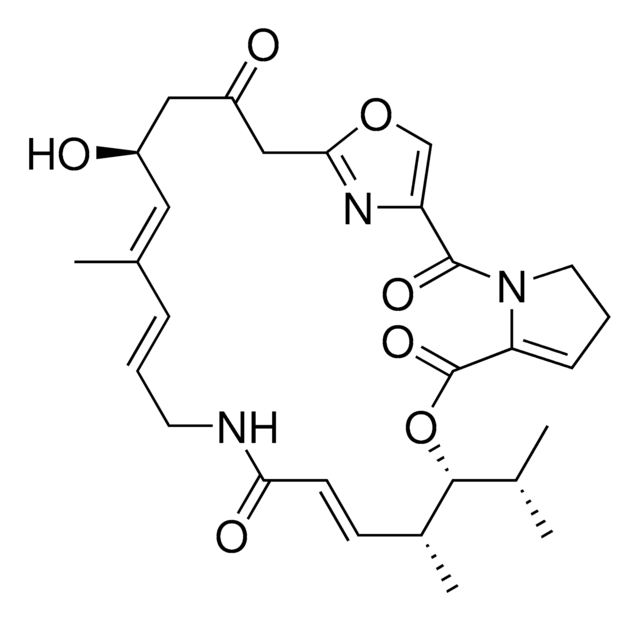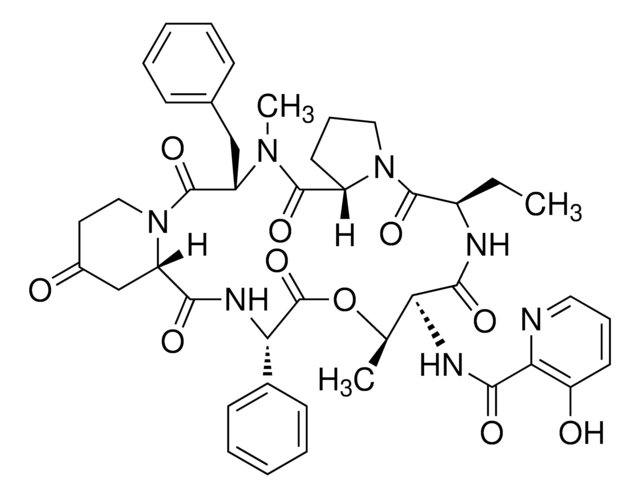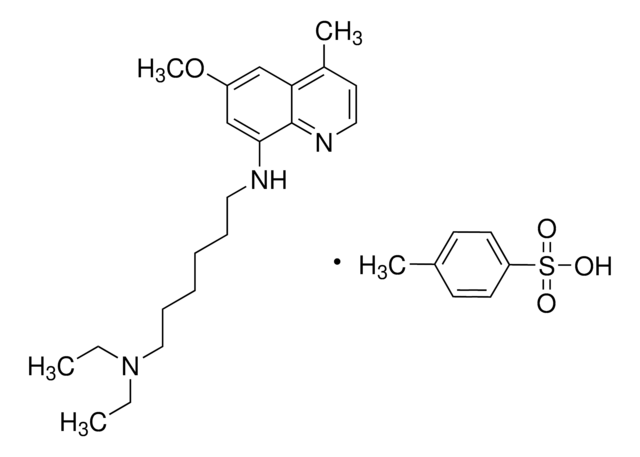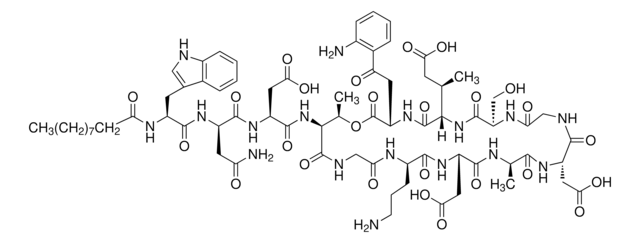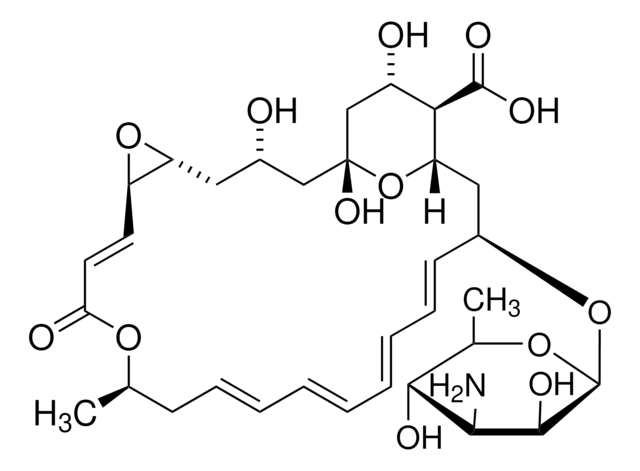SBR00044
Pristinamycin
≥98% (Assay)
Sinónimos:
Pristinamycine
About This Item
Productos recomendados
Quality Level
assay
≥98% (Assay)
form
powder
color
white to faint yellow
antibiotic activity spectrum
Gram-positive bacteria
mode of action
protein synthesis | inhibits
storage temp.
2-8°C
SMILES string
CN(C)C1=CC=C(C[C@@H](C(N2CCC(C[C@H]2C(N[C@@H](C3=CC=CC=C3)C(O[C@H](C)[C@H](NC(C4=NC=CC=C4O)=O)C5=O)=O)=O)=O)=O)N(C)C([C@H]6N(C([C@@H](N5)CC)=O)CCC6)=O)C=C1.O=C(N7C(C(O[C@H](C(C)C)[C@H](C)/C=C/C(NC/C=C/C(C)=C/[C@@H](O)CC(C8)=O)=O)=O)=CCC7)C9=COC8=N9
InChI
1S/C45H54N8O10.C28H35N3O7/c1-6-31-42(59)52-22-11-14-32(52)43(60)51(5)34(24-27-16-18-29(19-17-27)50(3)4)44(61)53-23-20-30(54)25-33(53)39(56)49-37(28-12-8-7-9-13-28)45(62)63-26(2)36(40(57)47-31)48-41(58)38-35(55)15-10-21-46-38;1-17(2)26-19(4)9-10-24(34)29-1
InChI key
YVMBAUWDIGJRNY-OOVQIFRISA-N
General description
Application
- in cloning and sequencing of genes involved in the biosynthesis of the depsipeptide antibiotics pristinamycins I (PI) produced by Streptomyces pristinaespiralis
- in a study on inducible gene expression system in mycobacteria
Biochem/physiol Actions
- Inhibition of protein synthesis: Pristinamycin binds to the 50S ribosomal subunit in bacterial cells, thereby inhibiting the formation of peptide bonds during protein synthesis. This disrupts the translation process and prevents the production of essential proteins necessary for bacterial growth and survival.
- Interference with cell wall synthesis: Pristinamycin also interferes with the synthesis of bacterial cell walls. It inhibits the transpeptidation step of peptidoglycan biosynthesis, which is essential for the cross-linking of cell wall components. This leads to the weakening of the bacterial cell wall and eventual cell lysis
Activity spectrum: Pristinamycin shows anti-bacterial activity against Gram-positive bacteria like Staphylococcus spp. and Streptococcus spp. Pristinamycin displays antimicrobial activity against macrolide-resistant Mycoplasma genitalium infection.
Features and Benefits
- Broad-spectrum activity: Pristinamycin is effective against a wide range of bacteria, including both Gram-positive and Gram-negative bacteria, as well as resistant strains.
- Synergistic effect: The two components of pristinamycin work together to produce a synergistic effect, meaning that they are more effective together than they are individually.
- Versatility: Pristinamycin can be used in Cell Biology and Biochemical applications
Other Notes
Storage Class
11 - Combustible Solids
wgk_germany
WGK 3
flash_point_f
Not applicable
flash_point_c
Not applicable
Elija entre una de las versiones más recientes:
Certificados de análisis (COA)
It looks like we've run into a problem, but you can still download Certificates of Analysis from our Documentos section.
Si necesita más asistencia, póngase en contacto con Atención al cliente
¿Ya tiene este producto?
Encuentre la documentación para los productos que ha comprado recientemente en la Biblioteca de documentos.
Nuestro equipo de científicos tiene experiencia en todas las áreas de investigación: Ciencias de la vida, Ciencia de los materiales, Síntesis química, Cromatografía, Analítica y muchas otras.
Póngase en contacto con el Servicio técnico